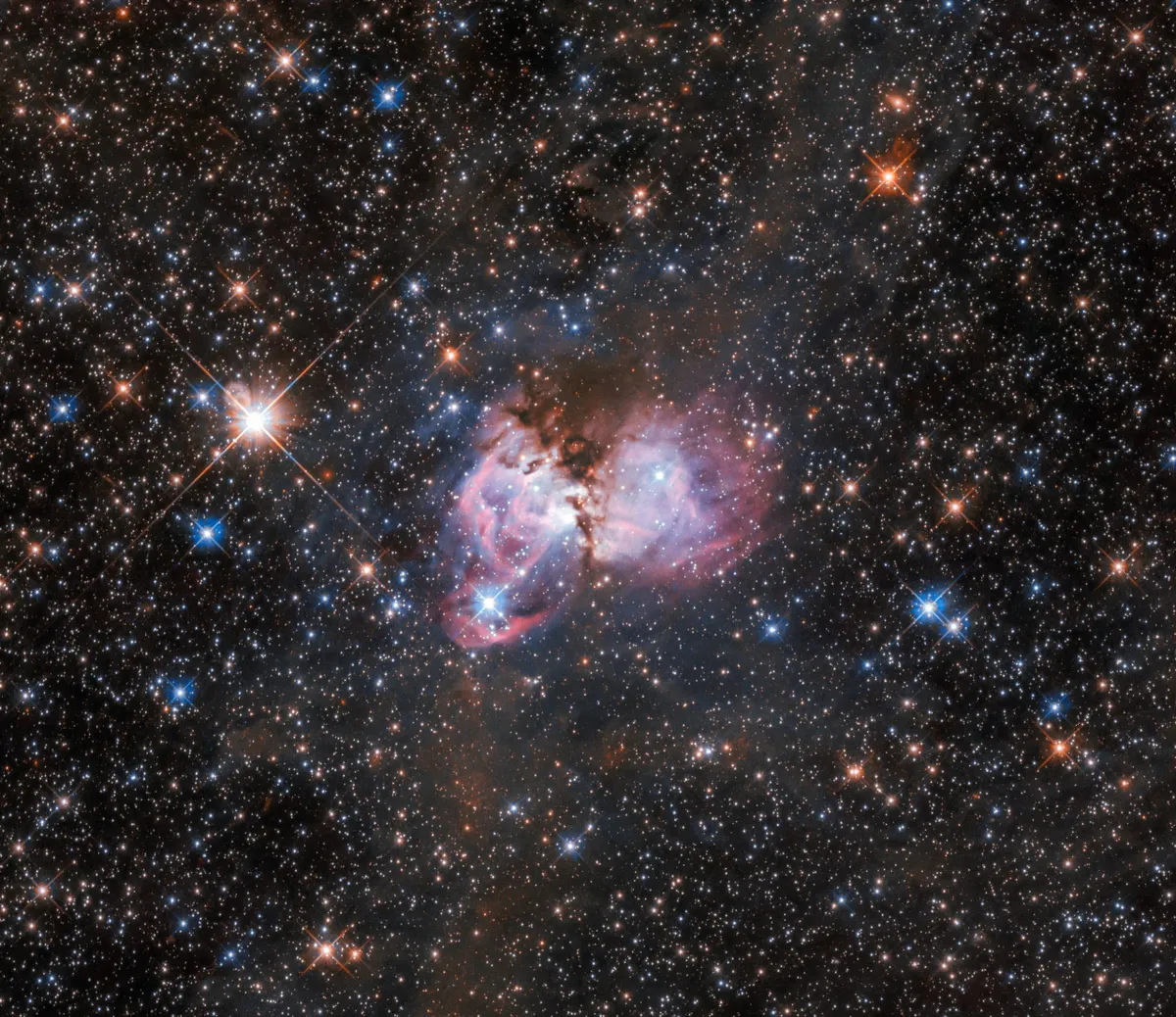
Its rather dull name, LHA 120-N 150, belies the beauty of this bright pink crucible of star formation sitting on the edge of the Tarantula Nebula.
A super-concentrated area of massive stars, called a super star cluster, it lies relatively near to us at 160,000 lightyears away in the Large Magellanic Cloud.
With little obscuring cosmic dust in between, the region is readily viewable from Earth and so is now a favourite target for astronomers hoping to understand how stars, particularly massive stars, are born.
One theory is that they form within and are then ejected from clusters in the glowing clouds of gas and dust.
Already, though, this would appear to be contradicted by observations that many of the stars studied seem to form in isolation.
What makes the task even harder is that although the region potentially hosts dozens of ‘stars’ to study, young massive stars can appear similar to dense clumps of dust.
Image stats
Observatory Hubble Space Telescope
Release date18 March 2020
Image credit ESA/Hubble/NASA/I. Stephens
